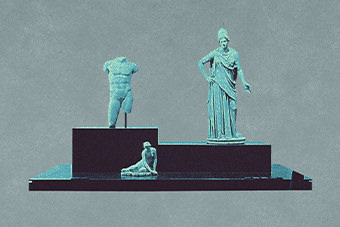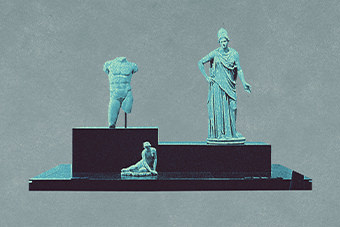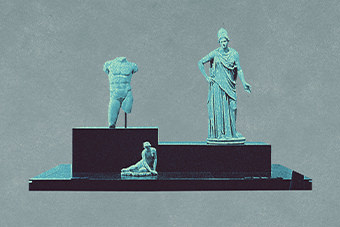Situated at Gandhi Chowk, Jaisalmer, the Thar Desert Museum was established on 6th December 2006 by Laxminarayan Khatri with the support of the then district collector KK Pathak. The Museum highlights the special identity and culture of the Thar desert region through its display of several folk arts and crafts, turbans, musical instruments, fossils etc from the area.
The Museum showcases the geological history of the Thar Desert through the display of sea fossils dating back millions of years, telling the story of how the sea turned into the great Thar Desert. Apart from this, details about local lifestyles and culture are given through displays of information about specific customs followed during birth, marriage, death, food cultures, crafts, costumes, etc. Various ornaments used to decorate beasts of burden like horses and camels, historical utensils, printing blocks and locks are also displayed, along with traditional musical instruments played by Manganiyar, Langa, and Gipsy tribes, apart from storage containers made of mud and papier mâché dating back three hundred years.
The Museum showcases various aspects of the history of the Jaisalmer princely state. The reign of Bhati Rajputs over the princely state of Jaisalmer has been showcased through the display of some original photographs of royalty, information on wars fought by the rulers, handmade weapons along with important state documents, coins, postcards, etc. Apart from this, various paintings of romance and religious icons painted in the Jaisalmer style have also been displayed.
Jaisalmer has had a history of international trade with Arabia and Europe in opium, spices, jewellery and ghee. Opium used to be an essential part of the local culture in the Thar especially during special occasions such as wedding and death ceremonies. A unique display at the museum showcases a typical scene of opium consumption on important occasions.
Things to note:
1) The Museum showcases the geological history of the Thar Desert through the display of sea fossils dating back millions of years, telling the story of how the sea turned into the great Thar Desert.
2) The reign of Bhati Rajputs over the princely state of Jaisalmer has been showcased through the display of some original photographs of royalty, information on wars fought by the rulers, handmade weapons along with important state documents, coins, postcards, etc.
3) Opium used to be an essential part of the local culture in the Thar, especially during special occasions. Some unique paintings displayed at the museum showcase scenes of opium consumption on important occasions such as weddings and funerals.
More Information
Getting there
Road/Rail: Excellent connectivity by road via NH 27. The museum is at a walking distance from the bus station and from the Baran railway station.
Air: Jaipur airport is 257 kms and Gwalior airport is 274 kms away from Baran.
Average duration of visit
Less than 1 hour
Best time of the day to visit
10:00 AM
Museum administered by
Private Organisation
Person in charge
Updated
This content has been created as part of a project partnered with Royal Rajasthan Foundation, the social impact arm of Rajasthan Royals, to document the cultural heritage of the state of Rajasthan.
Quick Facts
Address:
Near Main road, Artist Colony, Malka Pol, Jaisalmer, Rajasthan - 3345001
Visiting Time:
Sunday: 9 am - 7 pm
Monday: 9 am - 7 pm
Tuesday: 9 am - 7 pm
Wednesday: 9 am - 7 pm
Thursday: 9 am - 7 pm
Friday: 9 am - 7 pm
Saturday: 9 am - 7 pm
Phone:
+91-9414150762Entry Fees:
Adults (Indian nationals): Rs. 80/-
Adults (Foreign nationals): Rs100/-
Children: Rs. 50/-




